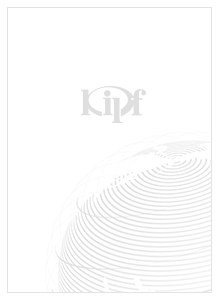상세 내용
This paper presents a quantitative analysis on the transmission effects of credit supplied by financial institutions in context of a Korean macro-financial model, which combines a macroeconomic model and a flow-of-fund model. The model explicitly includes the transmission mechanism of credit based on the previous studies that credit is different from money in the transmission effects on an economy. The results show that if there is an increase in M2 to stimulate the economy, credit supplied by financial institutions increase also. However, the growth rate of credit supplied by banks is less than that of M2 because banks prefer investment on bonds to supply of credit. Increase in the deposit interest rates without any increase in money supply, a policy to stabilize the economy, also induces increases in credit supplied by financial institutions. The reason is that financial institutions, especially nonbanks, prefers supply of credit to investments on bonds owing to the reduced interest rate gap. Increses in credit supplied by financial institutions resulted in increases in investments, consumptions and exports.

